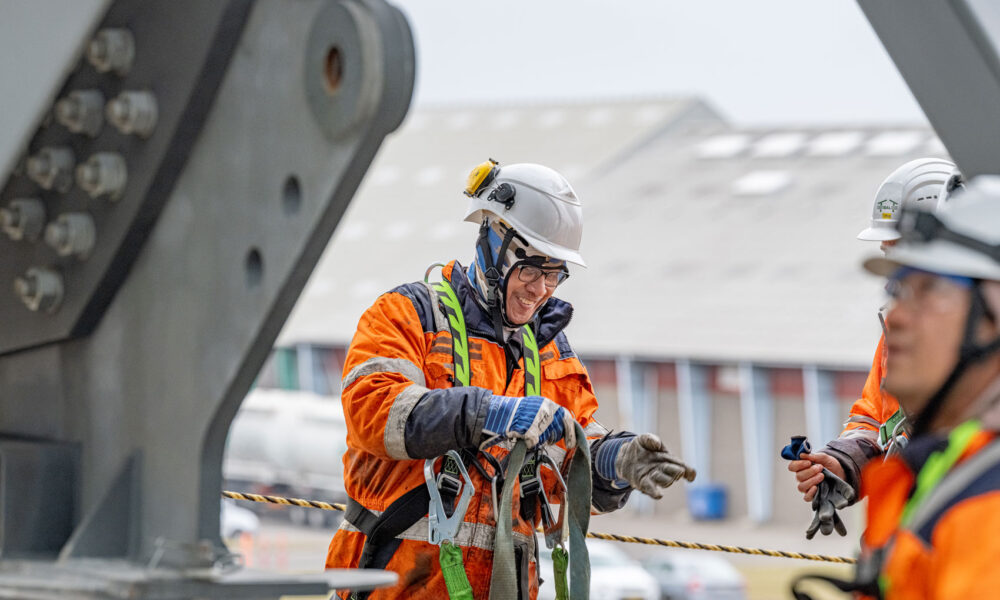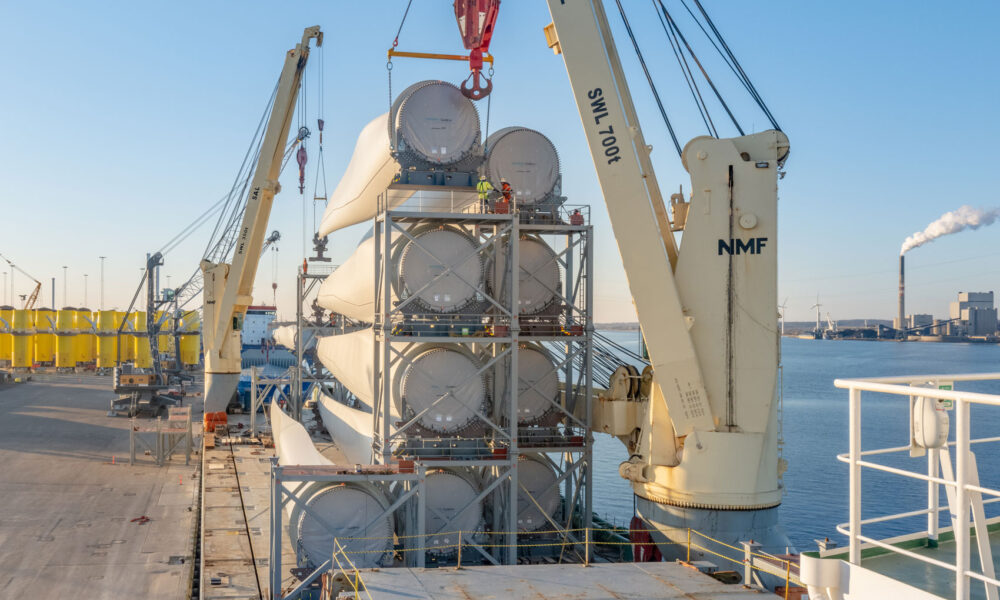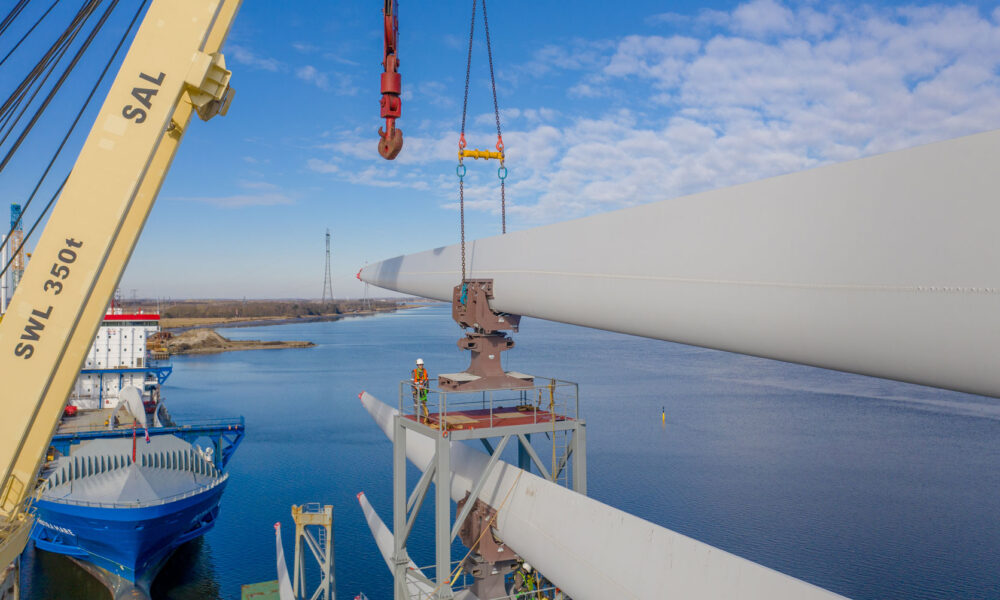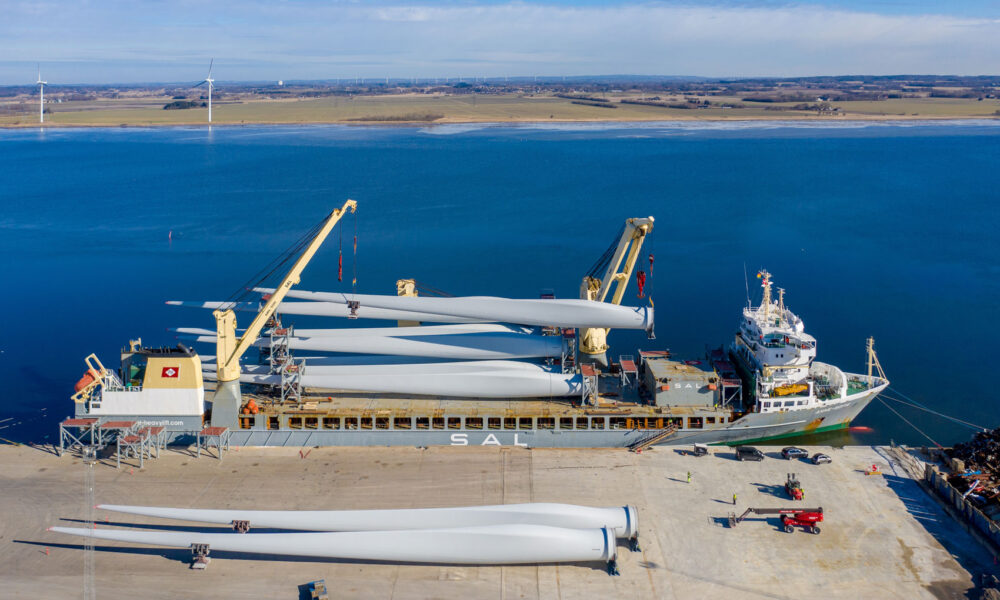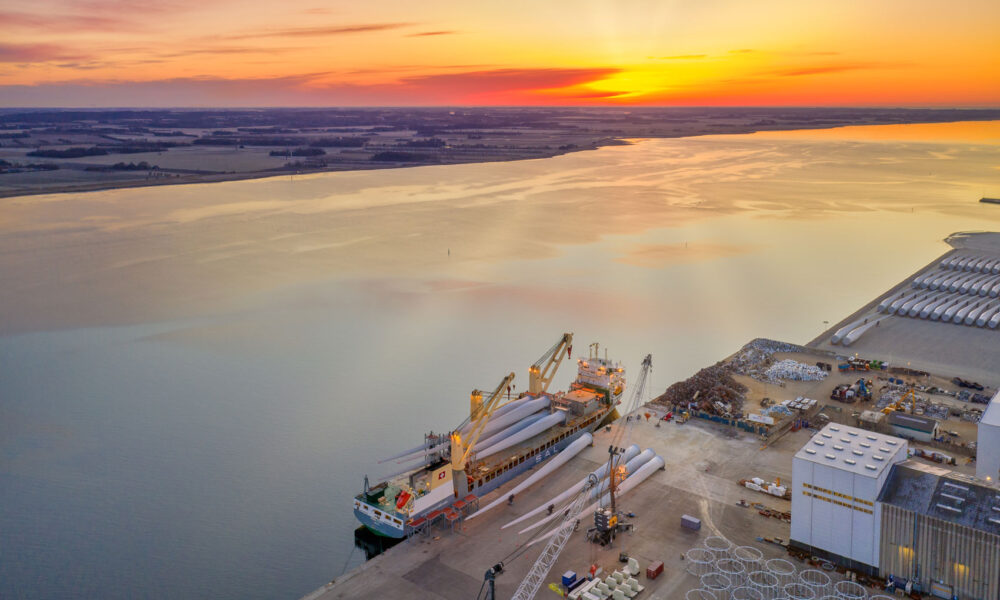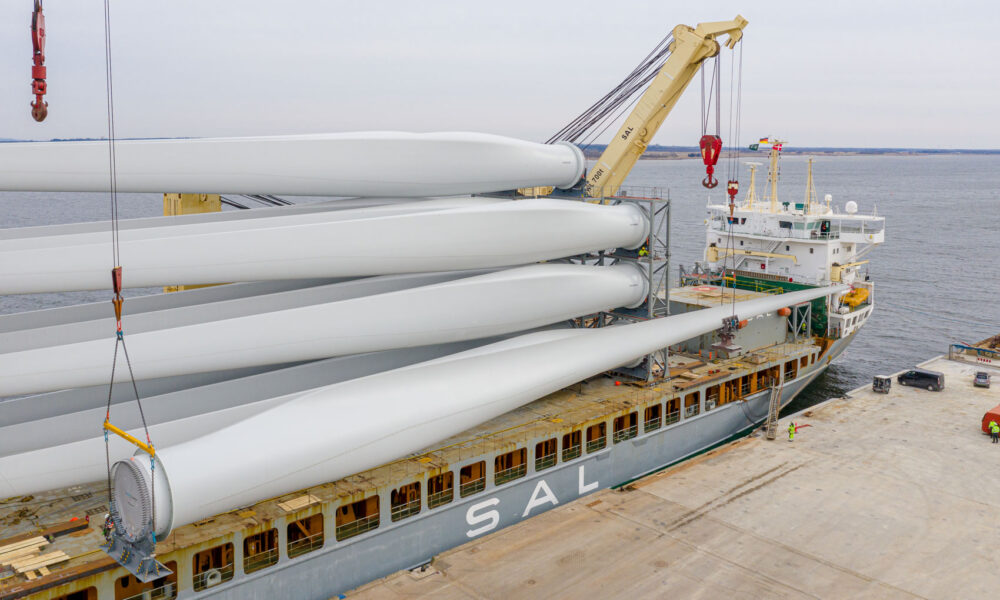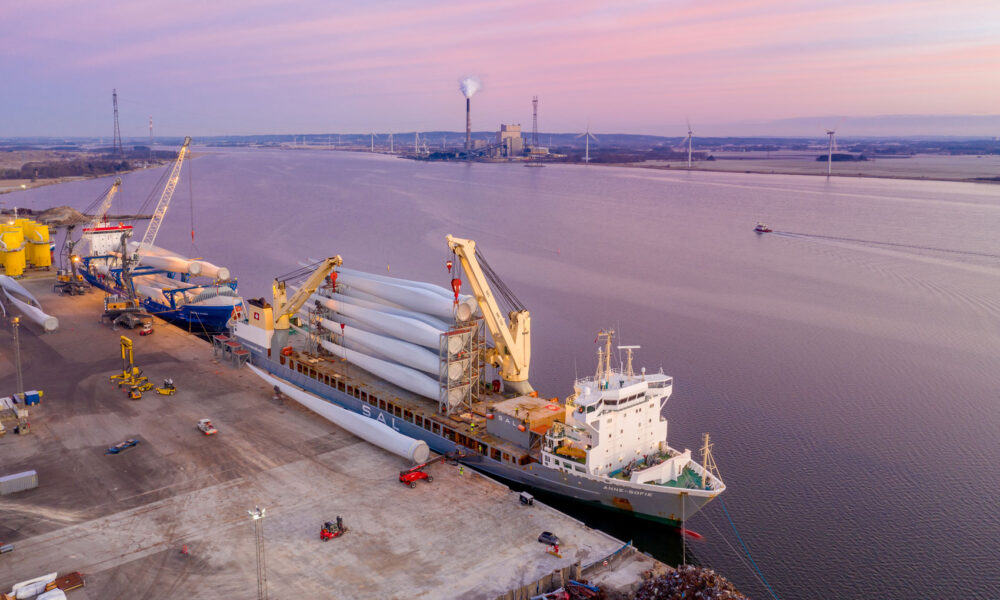#POWER
A green revolution for Taiwan
IN SHORT
| CLIENT | Siemens Gamesa Renewables Energy A/S |
| CARGO | B81 blades (82.07 x 7.3 x 6.08 m, 44.3 mt) 8MW Nacelles (20 x 7.9 x 10.58 m, 392,5 mt) |
| POL | Esbjerg, Denmark Aalborg, Denmark |
| POD | Taichung, Taiwan |
| SOFTWARE | AutoCAD, RFEM, Ansys, Inventor |
PROJECT SUMMARY
DEVELOPMENT OF A STACKING FRAME SYSTEM FOR 15 BLADES ON DECK
Taiwan is in the middle of a green energy revolution. The Formosa wind farms have placed the country at the centre of Asia’s growing offshore wind market and are playing a key role in realizing Taiwan’s green energy ambitions. In addition, the Yunlin offshore wind farm and the greater Changhua offshore wind farms are major milestones in Taiwan’s aim to reduce greenhouse gas emissions by 50% in 2050 and increase the share of renewable energy in its power supply to 20% by 2025.
The Jumbo-SAL-Alliance went full steam ahead to support a greener future in Taiwan. The task of moving 75 8-MW SG 8.0-167 DD turbines and 225 blades from Cuxhaven (Germany), Esbjerg and Aalborg (Denmark) to Taichung (Taiwan) kept the type 176, type 171, type 116 and type 161B vessels busy for quite some time. “Having this many vessels involved was not even the most difficult part of this project,” explained Fabian Obert, Manager Chartering & Projects at Jumbo-SAL-Alliance. “Our main challenge was to develop a stacking frame system for the blades as they were not initially planned to be stacked by our client SGRE (Siemens Gamesa Renewables). Luckily, we had an amazing team of experts at our side from SAL Engineering.”
LET THE STACKING GAMES BEGIN
It was necessary to develop a new stacking system to fulfil the client’s needs and safely transport the blades to their final destinations. “We usually like to use a mezzanine deck as a solution for projects of this kind, but this time it did not create sufficient intake. The aim was to create an intake of 15 blades on deck while still being able to load and discharge the cargo with our own gear and without shore crane assistance,” said Jonas Wehling, Project Engineer & Naval Architect at SAL Engineering.
In the end, SAL Engineering developed a stacking frame system that perfectly meets the client’s demands, including conducting FEM (Finite Element Method) analyses of the SAL vessel weather decks and supervising the manufacturing of the stacking frames. “Last but not least, we also arranged the delivery of the finished frames into the port of loading in Aalborg, Denmark,” added Jonas Wehling.
THREE IN ONE
There was another more operational challenge involved in the project: Discharging operations took place at three different terminals in Taiwan, as the cargo counted units for different project sites. Fabian Obert emphasised: “Handling the blades, measuring 82.07 × 7.3 × 6.08 metres and weighing 44.3 tons each, was quite difficult, as we had to operate in heights of up to 24 metres above deck.”
Fabian continued:
“We loaded and discharged the cargo with our own gear and cranes. As a result, the hook height maximum was reached for all blades in the top layer of the stacking frames. Keeping this in mind, we had all crew members participate in special working at heights training to ensure safety and efficiency.”
All blades were discharged using the vessel’s cranes in a tandem lift with extremely limited clearance between the blades. “We also had to modify our clients’ rigging arrangements to make it work as shorter rigging was required due to the limited hook height,” said Project Engineer, Jonas Wehling. He added: “The blades were lashed with standard lashing for the sea passage, but a careful weight spreading arrangement was needed on the weather deck to transfer loads from the blade stacks into the deck and hull.”
The first blades and nacelles safely arrived in their project ports in Taiwan and are waiting to be commissioned offshore at the Formosa, Yunlin and Greater Changhua project sites. The shipments will likely continue until mid-2022. “With this project, we once again saw that SAL Engineering will find just the right solution for even the most unique requests. Being part of these milestone projects makes us very proud, and we look forward to delivering logistics services for many more green projects to come,” Fabian Obert and Jonas Wehling agreed.
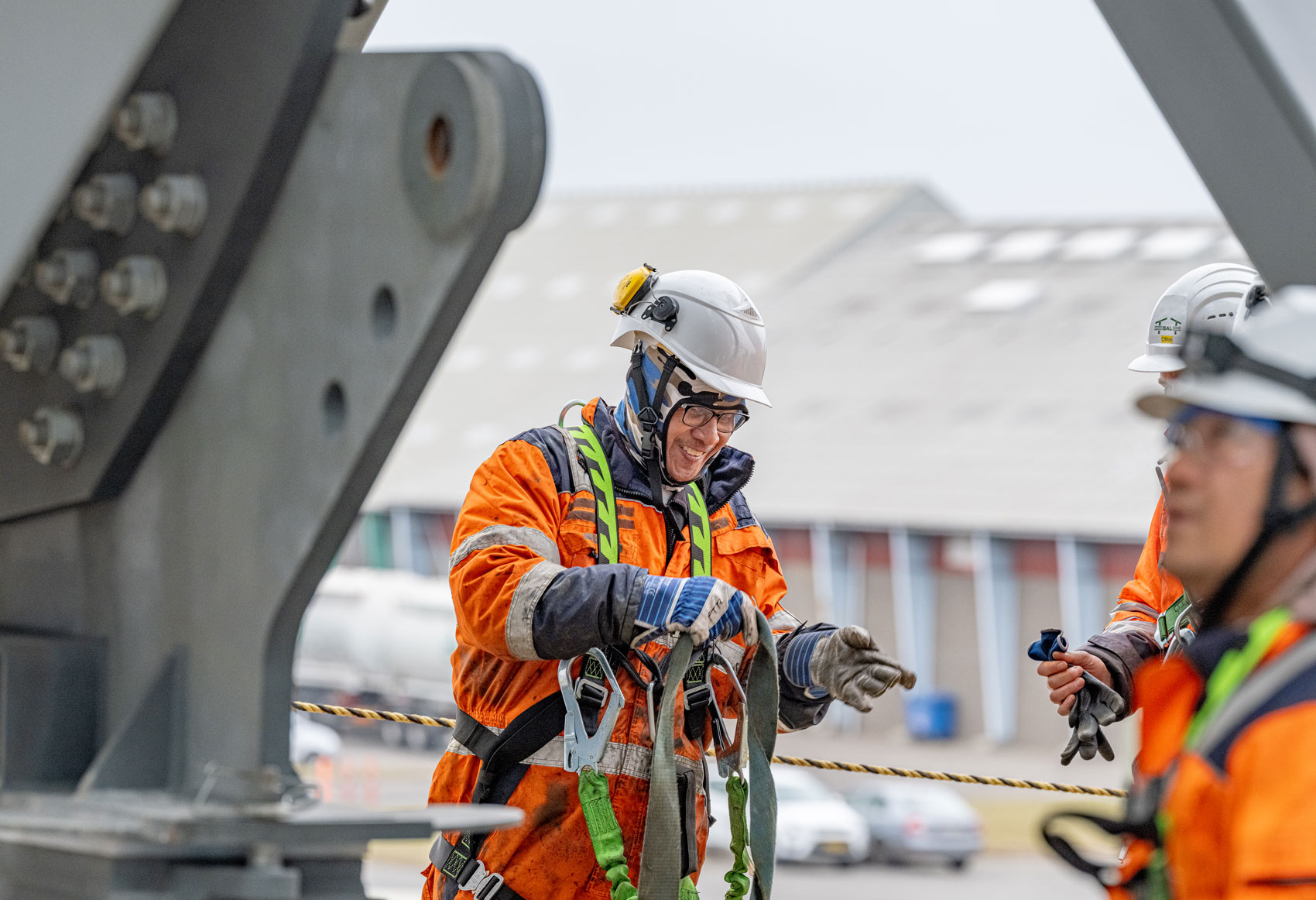
ABOUT FORMOSA 2
Stretching up to 9.5 kilometres off the coast of Miaoli County in northwest Taiwan, the 376-MW offshore wind power project Formosa 2 is expected to produce enough energy to power 380,000 households a year and offset approximately 18.75 million tonnes (Mt) of carbon emissions in its lifetime. Formosa 2 is located adjacent to Taiwan’s first commercial scale offshore wind farm Formosa 1, which was commissioned in December 2019.
The Formosa 2 wind farm is being developed as part of Taiwan’s goal to develop 5.5 gigawatts of offshore wind power by 2025. At the time of commissioning in 2021, Formosa 2 will be the biggest offshore wind farm in Taiwan – with 47 units of turbines stretching across 68.18 square kilometres. The turbines will be installed on jacket foundations in 55-metre-deep waters. Its capacity, however, is expected to be overtaken by the Greater Changhua offshore wind farm, from which 900 GW capacity is scheduled to go online in 2022.
Together, the Formosa 1, Formosa 2 and Formosa 3 wind farms can deliver up to 2.5 GW out of a targeted total of 5.7 GW of offshore wind energy by 2025. An additional 10 GW is projected by 2035. This is enough clean green power to over two million Taiwanese homes each year.
ABOUT GREATER CHANGHUA OWF
The Greater Changhua 1 & 2a offshore wind farms are projected to power more than one million households with a total of 112 turbines. They will be developed at four sites in the Taiwan Strait, ranging 35 to 60 kilometres off the coast of Changhua County, Taiwan. Overall, the four sites are planned to provide a total generation capacity of 2.4 GW.
The Changhua-1 and 2a wind farms are scheduled for commissioning in 2022, while the FID on Changhua 2b and 4 wind farms is expected in 2023. The four Greater Changhua wind projects are expected to comprise the biggest wind power complex in Taiwan and power approximately 2.8 million households in the country upon completion.
ABOUT YUNLIN PHASE 2
Yunlin offshore wind farm is a 640-MW project planned to be developed approximately eight kilometres off the coast of Yunlin County, Taiwan. Offshore construction works on the project started in early 2020, while commissioning is scheduled for December 2021. When completed, Yunlin will be one of the biggest wind farms in Taiwan – capable of providing clean electricity to over 450,000 Taiwanese homes while offsetting 916,000 tonnes of CO2 emissions a year.
The Yunlin offshore wind farm will consist of 80 offshore wind turbines. With a 167-metre diameter rotor and 81.4-metre-long blades, each turbine will have a swept area of 21,900 square metres and a rated capacity of 8 MW.

Want to know more?
Contact our team on
solutions@jumbo-sal-alliance.com


